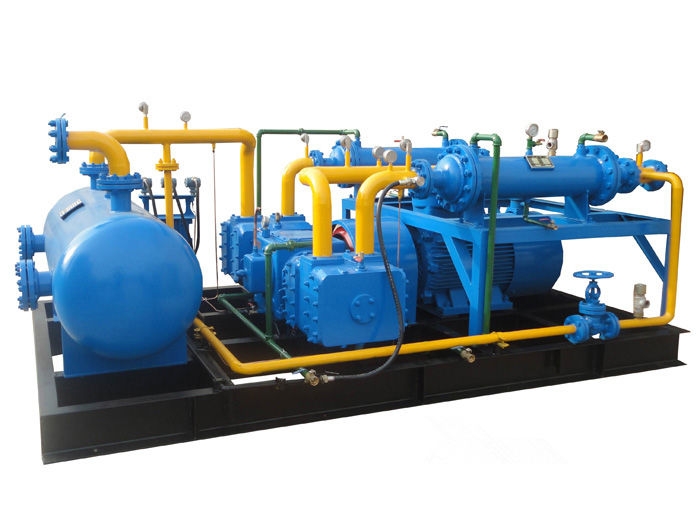My Adventure in Air Compressor Piston Replacement

Hey there, fellow DIY enthusiasts and curious minds! If you’re reading this article, it’s likely because you’ve encountered the need to replace the piston in your air compressor, just like I did not too long ago. I’m excited to share my journey and guide you through the process of air compressor piston replacement. Let’s roll up our sleeves and get started!
The Heart of the Air Compressor
Before we dive into the nitty-gritty of piston replacement, let’s take a moment to appreciate the importance of the piston in an air compressor.
What’s a Piston?
A piston is a cylindrical component that moves up and down inside the cylinder of an air compressor. It’s a critical part of the compression process, where air is drawn in, compressed, and then delivered for various applications.
Why Pistons Matter
Pistons play a vital role in creating the compression necessary for an air compressor to function. They’re like the engine of your compressor, and when they’re in good shape, your compressor runs efficiently.
Signs That It’s Time for a Replacement
First things first, how do you know when it’s time to replace the piston in your air compressor? Look out for these common signs:
1. Reduced Compression
If your compressor struggles to reach and maintain the desired pressure, it might be due to a worn-out piston.
2. Increased Oil Consumption
Excessive oil consumption can be an indicator that the piston is no longer sealing properly, allowing oil to mix with the compressed air.
3. Poor Performance
If your compressor is starting to stall, struggle, or exhibit erratic behavior, it could be a sign that the piston is failing.
4. Unusual Noises
Strange knocking, rattling, or banging sounds during operation may signal piston issues.
Step-by-Step Guide to Replacing the Piston
Now, let’s get into the nitty-gritty of how to replace the piston in your air compressor.
Step 1: Gather Your Tools
Before you start, ensure you have all the necessary tools and safety equipment on hand. You’ll need a wrench, socket set, pliers, a piston ring compressor tool, replacement piston, and gasket.
Step 2: Prepare Your Workspace
Find a clean, well-lit workspace and lay down some rags or towels to keep everything organized.
Step 3: Disconnect and Drain
Safety first! Disconnect the compressor from the power source and release all the air pressure from the tank.
Step 4: Remove the Cylinder Head
Using your wrench or socket set, carefully remove the cylinder head. This exposes the piston and cylinder.
Step 5: Extract the Old Piston
Gently slide the old piston out of the cylinder bore. Be cautious not to damage the cylinder walls during this process.
Step 6: Remove Old Gasket
If your compressor has a gasket between the cylinder head and the cylinder, remove it and clean the surfaces thoroughly.
Step 7: Install the New Piston
Carefully insert the new piston into the cylinder bore. Make sure it goes in smoothly without any obstructions.
Step 8: Reattach the Cylinder Head
Carefully reattach the cylinder head, ensuring that all bolts or screws are properly tightened. If there was a gasket, replace it.
Step 9: Test and Monitor
Reconnect the compressor to the power source and turn it on. Monitor the compressor for any signs of leaks, unusual noises, or performance issues.
Frequently Asked Questions (FAQs)
Let’s address some common questions about air compressor piston replacement.
Q1: How often should I replace the piston in my air compressor?
A: The frequency of replacement depends on usage and maintenance. In general, with proper care, a piston can last several years before needing replacement.
Q2: Can I replace the piston myself, or should I hire a professional?
A: If you’re comfortable with basic mechanical tasks and have the necessary tools, you can replace the piston yourself. However, if you’re unsure or uncomfortable with the process, it’s best to consult a professional technician.
Q3: Can I reuse the old gasket when replacing the piston?
A: It’s generally recommended to replace the gasket with a new one to ensure a proper seal and prevent leaks.
Q4: Where can I find a replacement piston and gasket?
A: You can find replacement pistons and gaskets at automotive supply stores, online retailers, or through the manufacturer of your air compressor.
Conclusion
In conclusion, replacing the piston in your air compressor is a manageable DIY task that can significantly improve the performance and efficiency of your compressor. Understanding the signs that it’s time for a replacement and following the step-by-step guide can help you complete this maintenance task successfully.
Regular maintenance is key to keeping your air compressor running smoothly, and the piston plays a crucial role in that. So, don’t hesitate to give your compressor the care it deserves. Your projects will thank you for it!
For a wide range of compressors, including process compressors and nitrogen compressors, check out CN Compressors. Happy compressing and maintaining your air compressor!
